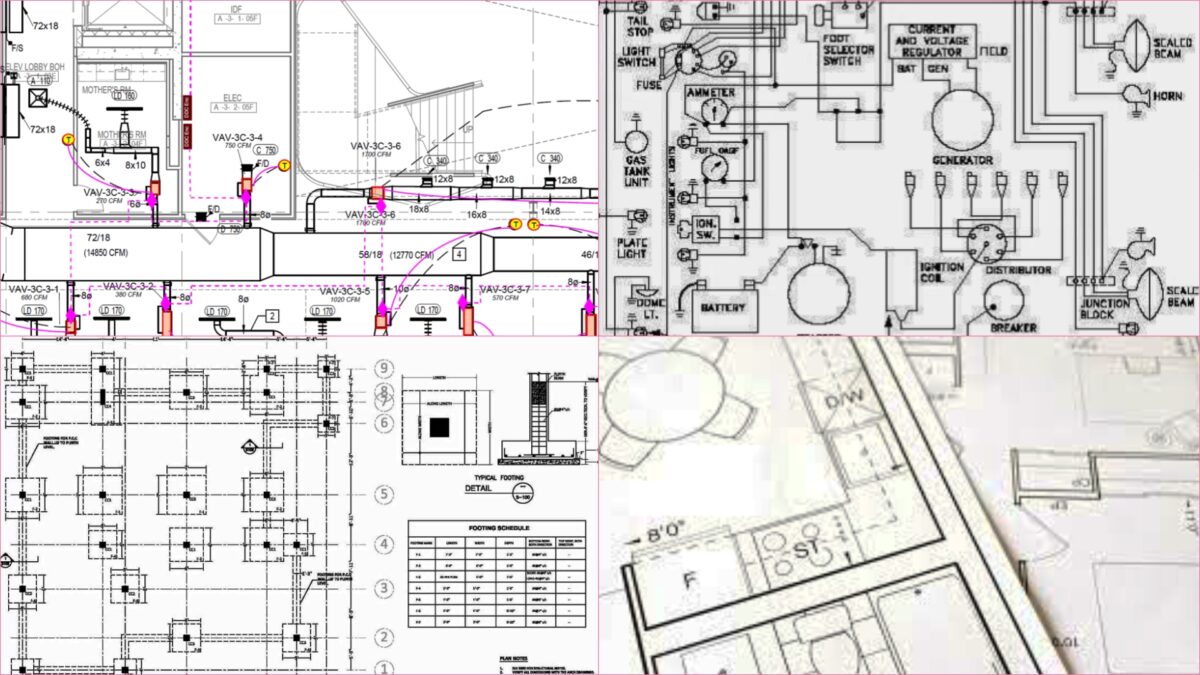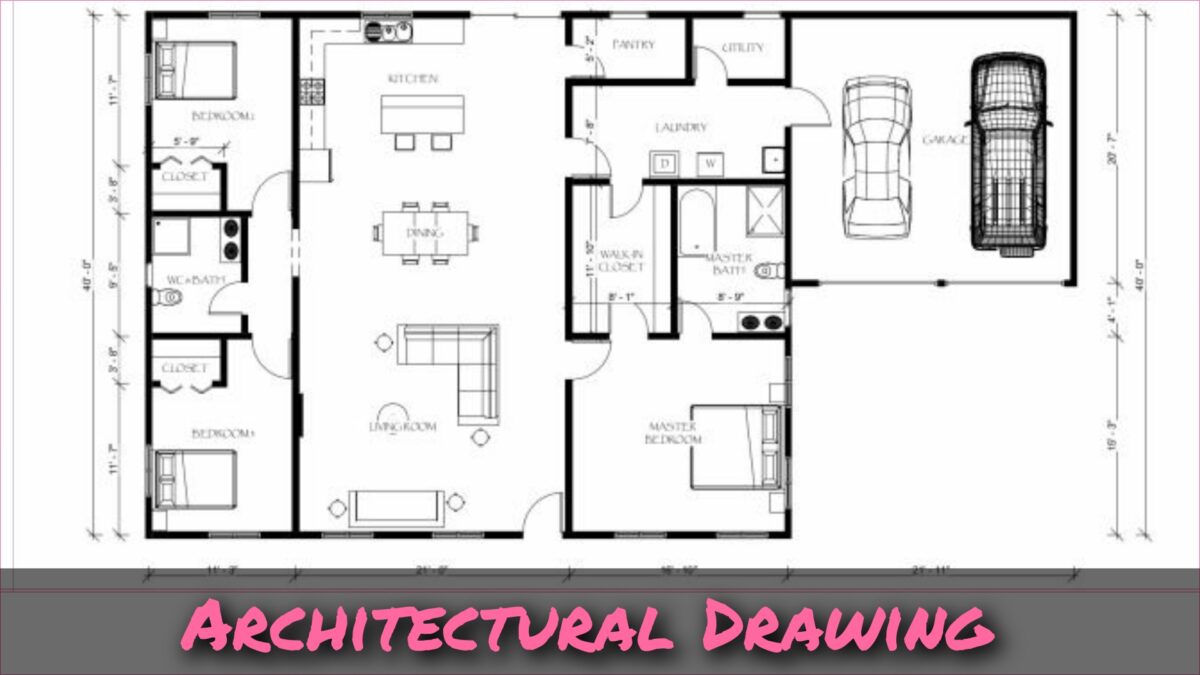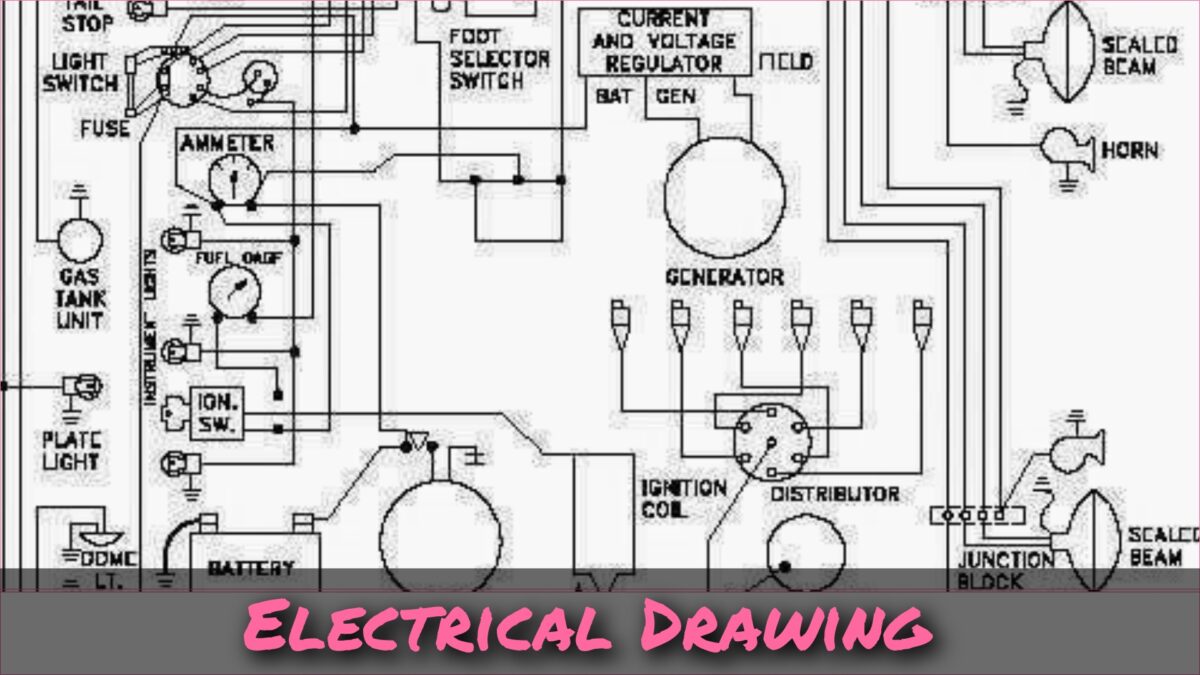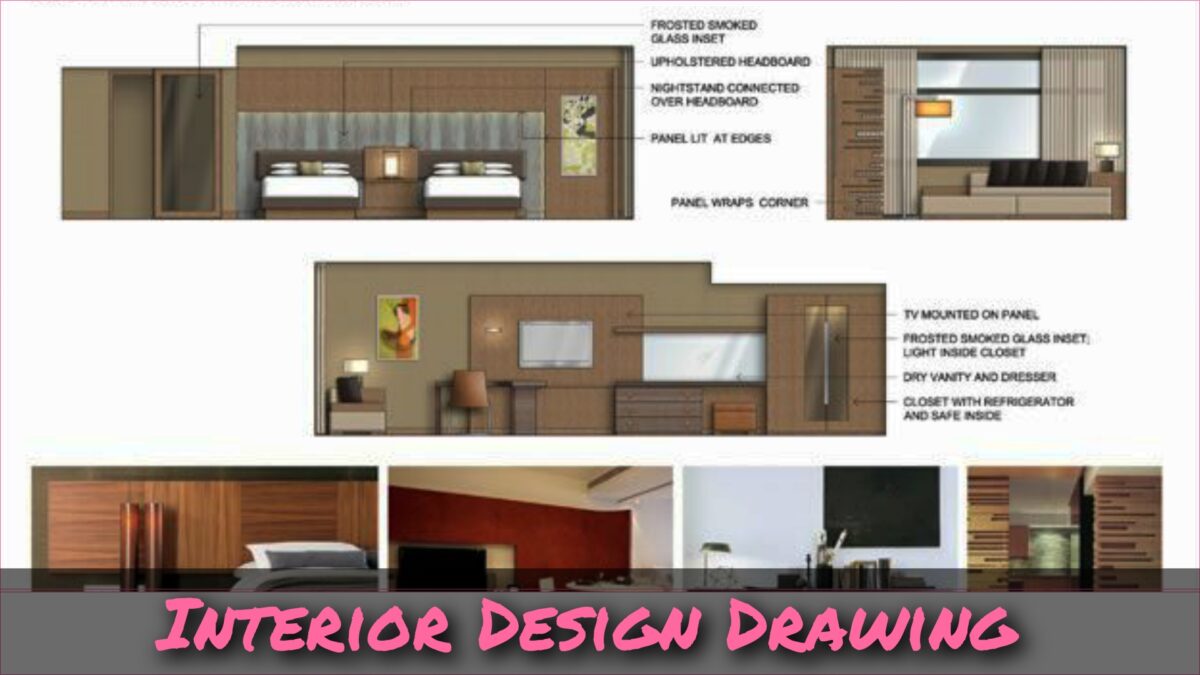Various types of drawings are used in construction. The most common drawings are architectural drawing, structural drawing, electrical drawing, mechanical drawing, and interior Drawings.

These drawings provide complete details such as layout plan, modeling, and detailing.
Drawings play a vital role in the construction field to convey the ideologies and perspective of the designer to the layman at the site.
The drawings might be utilized to demonstrate the general appearance, inside or outside the design, or they might be utilized to show exact measurements and other details for construction.
Table of Contents
Different Types Of Drawings Used In Building Construction
There are five types of drawings construction used in construction.
- Architectural Drawing
- Structural Drawing
- Electrical Drawing
- Mechanical Drawing
- Interior Drawings
Let us discuss each type of drawing one by one.
1. Architectural Drawing
Architectural Drawing provides a complete view of a building from all sides (Front, Rear, Side views).

It demonstrates the location of the building and all building parts where they will be placed. There are different kinds of architectural drawings with different names like plan, elevation, section, etc.
2. Structural Drawing
Structural Drawing provides details about the structural detailing of the various components in the building. There are various software are used to prepare structural drawings such as Staad pro, Sap2000, Etab, etc.

A structural engineer should know the manual design and various structural codes such as British code and American code. These two codes are very popular throughout the world.
3. Electrical Drawing
Electrical drawing provides details about electric load calculation, wiring, electric fixtures, etc.

Electrical drawings are important for designing, building, and fixing electrical systems. They help us see how things are connected and work together. These drawings are used in different jobs like electrical engineering, electronics, and automation.
In an electrical drawing, we use special pictures to represent different electrical things like switches, resistors, capacitors, transformers, and motors. Lines show how these things are connected, like power lines and signal lines.
Electrical drawings may also have other information like details about the parts, safety devices, and how to protect the system. We make these drawings using special computer programs that help us draw and change things easily.
4. Mechanical Drawing
Mechanical drawing provides details about Plumbing, HVAC, and Firefighting.

Mechanical drawings helps us understand how pipes are arranged, where fixtures go, and how big they should be.
These drawings also show us how water is delivered and how wastewater is taken away in a building. They tell us where important parts like shut-off valves and backflow prevention devices should be placed.
Mechanical drawings for plumbing systems are important because they make sure everything is installed correctly, water flows smoothly, and we follow the rules and laws for buildings.
5. Interior Drawing
Interior drawing provides details about the interior space of the building. Interior space is used for specific requirements and for the purposes of aesthetics. A model can be seen before it actually built by using rendering techniques.

Interior drawing is a crucial part of architectural design that focuses on providing detailed information about the inside spaces of a building. It plays an important role in conveying the intended functionality, appearance, and overall experience of the interior environment.
The interior space within a building serves specific purposes, depending on its use. For example, in homes, interior spaces are designed for activities like living, dining, sleeping, and working. In commercial buildings, the interior spaces are customized for functions such as offices, shops, restaurants, or entertainment venues. Institutional buildings have interiors designed for education, healthcare, or government purposes.
Apart from meeting functional needs, interior spaces are also designed to look appealing. Aesthetics in interior design involve choices of colors, materials, textures, furniture, lighting, and other elements that create a visually pleasing and harmonious environment. The design choices aim to enhance the overall atmosphere, reflect the desired style or theme, and create a positive emotional response for the occupants.
To show and explain the proposed interior design before actual construction, rendering techniques are commonly used. Rendering refers to creating realistic or artistic representations of the interior spaces using computer software. These techniques use advanced 3D modeling, lighting, shading, and texturing tools to create detailed and accurate visualizations.
By using rendering techniques, architects and designers can effectively present their interior design ideas to clients, stakeholders, and construction teams. Renderings provide realistic representations of the space, allowing everyone involved to understand the layout, materials, colors, and overall look of the interior environment. This helps in making informed decisions, evaluating design choices, and ensuring that the final result meets expectations.

welcome